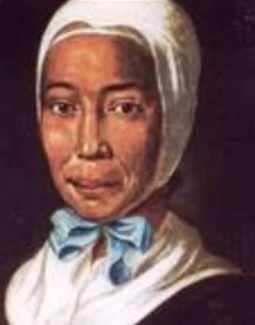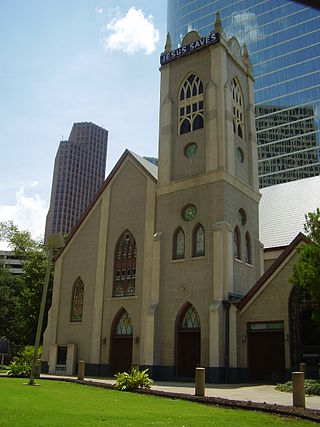
Nikolaus Ludwig, Reichsgraf von Zinzendorf und Pottendorf was a German religious and social reformer, bishop of the Moravian Church, founder of the Herrnhuter Brüdergemeine, Christian mission pioneer and a major figure of 18th-century Protestantism.

Herrnhut is an Upper Lusatian town in the Görlitz district in Saxony, Germany, known for the community of the Moravian Church established by Nicolas Ludwig, Count von Zinzendorf, in 1722.

Berthelsdorf is a former municipality in the district of Görlitz, in the southeastern part of Saxony, Germany. On 1 January 2013, it was incorporated into the town of Herrnhut.

The Moravian Church, or the Moravian Brethren, formally the Unitas Fratrum, is one of the oldest Protestant denominations in Christianity, dating back to the Bohemian Reformation of the 15th century and the Unity of the Brethren founded in the Kingdom of Bohemia, sixty years before Luther's Reformation.

Old Salem is a historic district of Winston-Salem, North Carolina, United States, which was originally settled by the Moravian community in 1766. It features a living-history museum which interprets the restored Moravian community. The non-profit organization began its work in 1950, although some private residents had restored buildings earlier. As the Old Salem Historic District, it was declared a National Historic Landmark (NHL) in 1966, and expanded fifty years later. The district showcases the culture of the Moravian settlement in the Province of North Carolina during the colonial 18th century and post-statehood 19th century via its communal buildings, churches, houses and shops.

Rebecca Freundlich Protten, also Shelly (1718–1780) was a Caribbean Moravian evangelist and pioneer missionary who proselytized the Gospel to enslaved Virgin Islanders of Saint Thomas, U.S. Virgin Islands. A "mulatress" and a former enslaved Antiguan, Antigua and Barbuda, she pioneered Christian missions in the Atlantic World in the 1700s. Scholars have described her as the "Mother of Modern Missions" as her life's work bridged Christianity in the West Indies, in Europe and in West Africa, all geographic regions she lived in.

Coral Bay is a town and a sub-district on the island of St. John in the United States Virgin Islands. It is located on the southeastern side of the island. It was the commercial center of the island in the 19th century as the site of the largest plantation, but from the 1950s onward the population dwindled as the Cruz Bay side of the island with its airport and ferry service to St. Thomas became the gateway to the Virgin Islands National Park. Today Coral Bay is a thriving small community with small outdoor restaurants, grocery stores, businesses and tourism services.

United Society Partners in the Gospel (USPG) is a United Kingdom-based charitable organization.

The Moravian Church in North America is part of the worldwide Moravian Church Unity. It dates from the arrival of the first Moravian missionaries to the United States in 1735, from their Herrnhut settlement in present-day Saxony, Germany. They came to minister to the scattered German immigrants, to the Native Americans and to enslaved Africans. They founded communities to serve as home bases for these missions. The missionary "messengers" were financially supported by the work of the "laborers" in these settlements. Currently, there are more than 60,000 members.
This article covers the period from the origin of the Moravian Church, as well as the related Hussite Church and Unity of the Brethren, in the early fourteenth century to the beginning of mission work in 1732. Further expanding the article, attention will also be paid to the early Moravian settlement at Bethlehem, Pennsylvania, following their first arrival in Nazareth, Pennsylvania in 1740.

Protestantism is the dominant religion in Jamaica. Protestants make up about 65% percent of the population. The five largest denominations in Jamaica are: Church of God, Seventh-day Adventist, Baptist, Pentecostal and Anglican. The full list is below. Most of the Caribbean is Catholic; Jamaica's Protestantism is a legacy of missionaries that came to the island in the 18th and 19th centuries. Missionaries attempted to convert slaves to varying Protestant denominations of Moravians, Baptists, Methodists, and Presbyterians to name a few. As missionaries worked to convert slaves, African traditions mixed with the religion brought over by Europeans. Protestantism was associated with black nationalism in Jamaica, aiming to improve the lives of blacks who were governed by a white minority during colonial times. Today, Protestantism plays an important role in society by providing services to people in need.

Strawberry Chapel is a parochial chapel of ease in the lower part of St. John's, Berkeley Parish in Berkeley County, South Carolina that was built in 1725. It is on Strawberry Chapel Road between South Carolina State Highway 8-44 and the West Branch of the Cooper River. Bordering Strawberry's property is the South Carolina State owned historic site of the “Town of Childsbury.” It was a planned community that was settled in 1707. The town no longer exists. They were named to the National Register of Historic Places on April 26, 1972.
Nils Otto Tank was a Norwegian born, Moravian Church missionary and teacher. He was a pioneer settler in Wisconsin.

Westover Church is a historic church located 5 miles (8.0 km) west of Charles City off Virginia State Route 5 in Charles City, Virginia, United States. It was built in 1731 and added to the National Register of Historic Places in 1972.

Antioch Missionary Baptist Church is a historic Baptist church at 500 Clay St in Downtown Houston, Texas. It was historically a part of the Fourth Ward. As of 2012 it was the only remaining piece of the original Fourth Ward east of Interstate 45.

Johann Leonhard Dober was, along with David Nitschmann, one of the two first missionaries of the Moravian Brethren in the West Indies in 1732.
The Moravian Slaves, a popular narrative about Christian Missions concerning Johann Leonhard Dober and David Nitschmann, describes how these two young Moravian Brethren from Herrnhut, Germany, were called in 1732 to minister to the African slaves on the islands of St. Thomas and St. Croix in the Danish West Indies. Allegedly, when they were told that they would not be allowed to do such a thing, Dober and Nitschmann sold themselves to a slave owner and boarded a ship bound for the West Indies. As the ship pulled away from the docks, it is said that they called out to their loved ones on shore, "May the Lamb that was slain receive the reward of His suffering!"

Tutu Plantation House in the Tutu subdistrict of St. Thomas, U.S. Virgin Islands, was built in 1813. It was listed on the National Register of Historic Places in 1976. The listing included two contributing buildings.
The property known as Estate Niesky was purchased in 1755 by the Moravian Church in Charlotte Amalie, during the era when America's original Thirteen Colonies were still part of the British Empire. The United States would not take possession of the islands until March 31, 1917, at which time Denmark sold the islands for the sum of $25,000,000 in United States gold coin.

















